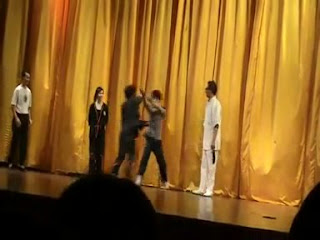Stopping techniques at a pre-determined point

I have previously discussed how traditional strikes are stopped by the practitioner at a pre-determined point; they do not rely on the target to stop the strike. [For the purposes of this article I shall simply refer to “strike”, but you can take this to refer to any kind of strike, punch or kick.] I have discussed how this needn’t mean that the traditional strike is “weak” – it may not carry as much force as a “follow through” but it makes up for this at least in part through concepts like “ kime ” (focus) and hydrostatic shock . But what is the imperative that causes virtually every traditional Far Eastern traditional martial art to stop strikes at a pre-determined point? Why not simply follow through with each technique until it is stopped by the target? The answer lies in priority. Unlike, say, combat sports or military disciplines, civilian defence does not prioritize hitting. It prioritizes not being hit. Accordingly, civilian defence strikes are inherently conservative ...
.jpg)